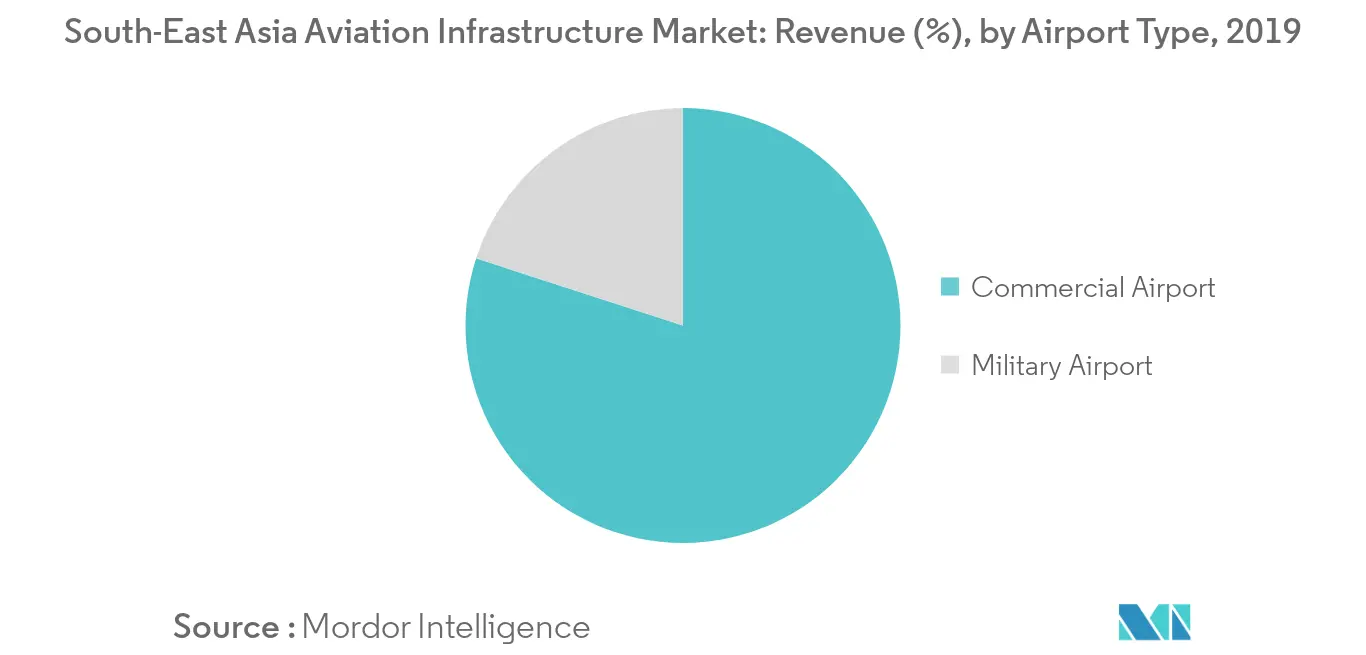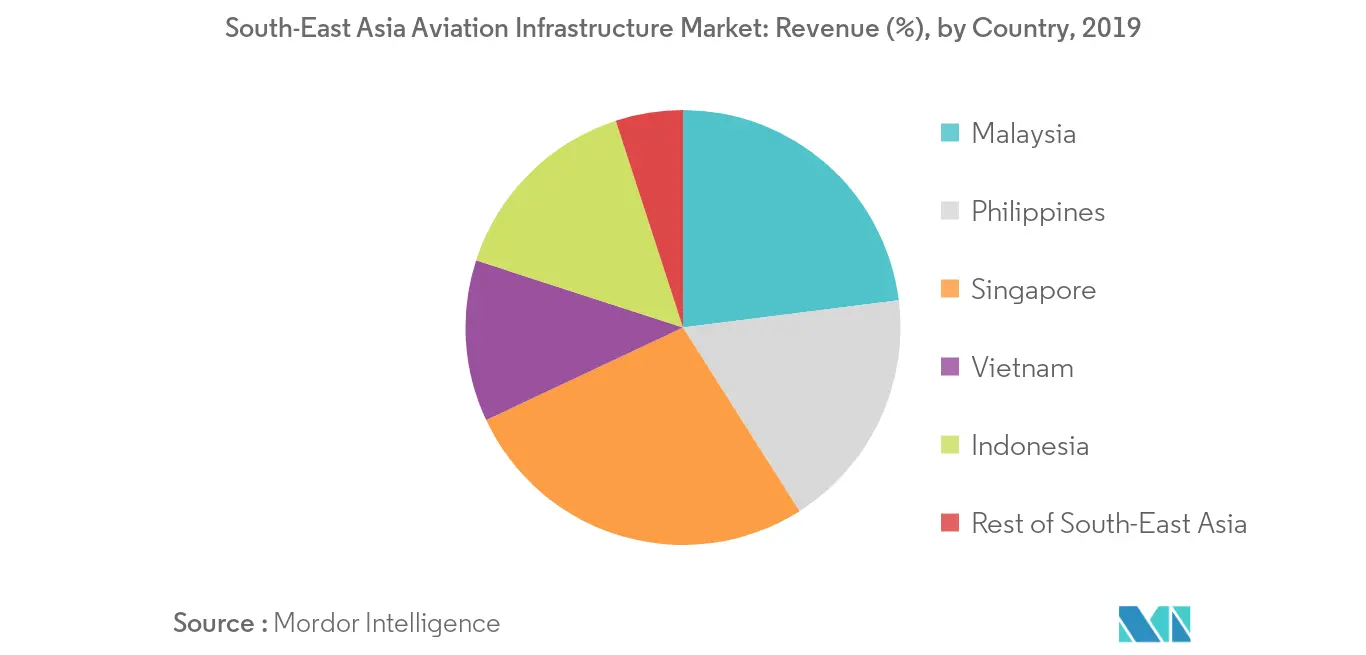Market Trends of South-East Asia Aviation Infrastructure Industry
This section covers the major market trends shaping the South East Asia Aviation Infrastructure Market according to our research experts:
Commercial Airport Segment to Dominate the Market During the Forecast Period
The rapid passenger growth in the region has resulted in several airports operating at their threshold capacity to facilitate the movement of aircraft, passengers, and freight. Besides, the introduction of ASAM could include the relaxation of bilateral agreements, and the dropping of visa requirements will further ignite the development and enhance growth opportunities for the airlines and the airports. Thus, to cater to the burgeoning demand, all major airports in the region are planning or are now implementing bigger airport solutions involving either new runways or new passenger terminals. For instance, as of February 2019, Indonesia was planning to invest USD 7 billion to the construction of a greenfield airport in Jakarta to support the increasing demand for air travel in the country. The construction on the new terminal is scheduled to commence in 2021 and would be designed to effectively serve around 45 million passengers annually. Also, existing terminals in the country would be modernized to accommodate 25 million passengers each from almost nine million passengers per year. Malaysia is also planning a major expansion of the Penang International Airport, and it is already in its initial phase to expand the airport's capacity to 16 million passengers over the upcoming five-year period. Several similar programs are underway in other countries, and such developments are envisioned to bolster the growth prospects of the market in focus during the forecast period.

Singapore to emerge as a Major Aviation Hub During the Forecast Period
The total fleet size of South-East Asian commercial airline operators is anticipated to witness a three-fold growth by 2039. Thus, the development of new airports in the region would be critical to foster the booming tourism sector. On this note, in April 2018, the Changi Airport Group (CAG) announced that Ove Arup & Partners International Limited, Mott MacDonald Group Limited, and Surbana Jurong Consultants had been contracted to provide full consultancy services for the design of the key structures, including the main terminal building, satellite terminal building, and ground transportation center at the Terminal 5 of the Changi Airport, slated to become operational by 2030. The terminal is part of the larger Changi East development project that includes a three-runway system, as well as the development of cargo complexes and other supporting aviation and ground transport infrastructure. The project will provide Changi Airport with an additional capacity of up to 50 million passenger movements per annum in its initial phase, and an additional 100 aircraft stands. The development of some domestic airports is also underway in the country. Such developments are envisioned to drive the business prospects of the market in Singapore during the upcoming period.

